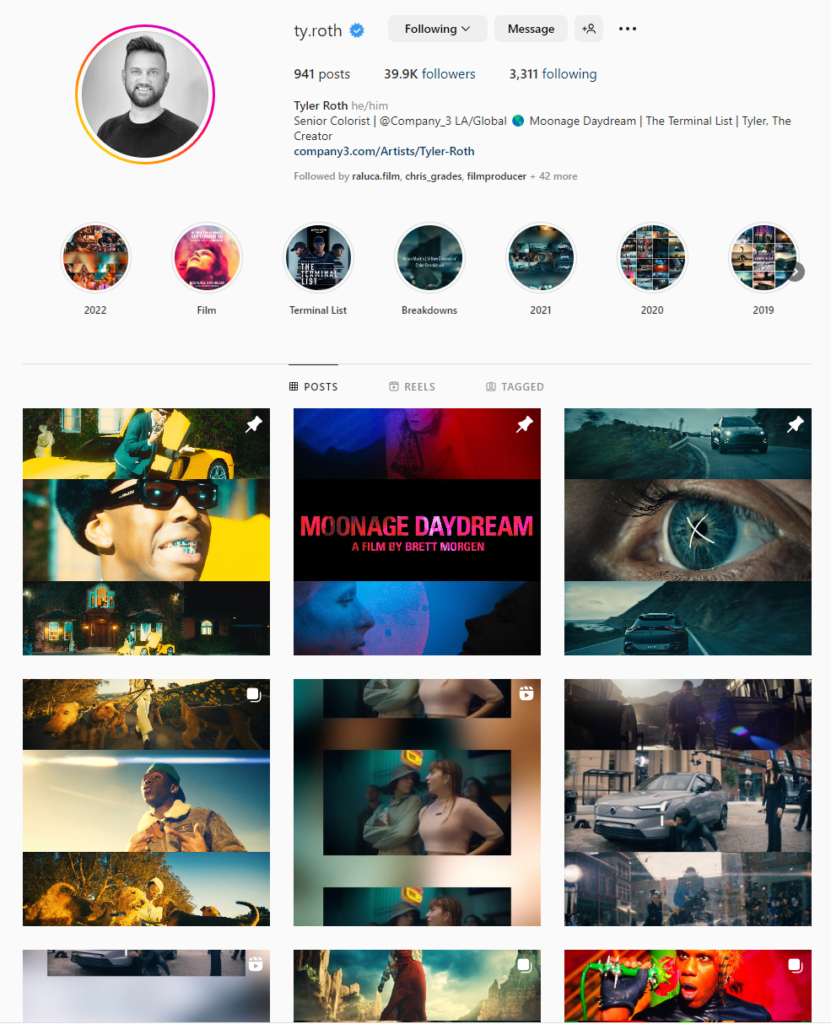Learning color grading changed my life. I started as a travel video creator and found my way to becoming a videographer for weddings and music videos. Then, now I focus on color grading short films and feature films for clients worldwide.
Let me tell you about one experience that made me focus on color grading.
Here in our place, the videographers’ rates are mostly around $200 for a Prenup film. They are mostly amateurs and the clients here aren’t educated enough to pay at least $1000 for a video.
So, I positioned myself here as a Premium Choice that is almost double that price. To be exact it’s $350.
I pay my Gaffer $100 so I’m left with $250 for every gig. It was okay back then. I was working a day job and doing that as my part-time on weekends.
As I gain several clients and you start feeling burnt out, I was really thinking of quitting. The amount of effort, creativity, technical skills, and interpersonal skills needed to create one great film is crazy. If you’re a filmmaker, you know it.
You are the director, cinematographer, editor, colorist, sound designer, and overall story creator. You’ll be planning the concept of the film for hours, shooting for one whole day, and editing for 2 to 3 days for $250.
Then, one day I received an E-mail. I thought it was another filmmaking gig. It was from a video production company in the US asking me to match the clips he has to a reference clip for $200.
It was just a guy doing sit-ups and squats in the same room. It took me less than an hour to successfully match the clips to the reference and it made me $200.
That was the start of my discovery of this amazing job, color grading.
Start by Studying the Technical Part of Color Grading
Color grading requires both technical and creative skills. The reason why I suggest learning the technicals first is that you’ll be able to know what are the possibilities and the limitations of the certain software you’re using.
It’s also because you can start practicing different sub-skills like color correcting and shot matching. If you study the creative side first, you won’t be able to apply them at once because you’re limited with what you currently know with the technicals.

I highly suggest that you start learning color grading with a complete color grading course to avoid being confused along the way. I recommend Waqas Qazi’s Freelance Colorist Masterclass because after taking almost all available color grading courses, it’s in after taking this course that I felt equipped and ready to take on clients.
Don’t be tempted to buy the cheap courses to save money because I’ve taken most of them and I’m sure that you’ll still feel lost after taking these cheap courses. I still recommend you take them but just for additional knowledge.
Improve your Taste
This is the most important part to succeed as a colorist. Yes, you can use the software perfectly, match shots perfectly, and create really clean images but if you don’t have great taste, you’ll never stand out as a colorist.
As a colorist, you’re going to show your work on social media, your website, or in your demo reel. People will judge your grade based on your taste. It’s given that a professional colorist’s work should look good but if you have great taste, it will not just look good but it will make people remember you for your art.
A great example is Ty Roth from Company 3. Just look at his Instagram @ty.roth.

He’s well known for his out-of-the-box taste in colors. If you’re a beginner colorist, would you have the confidence to create such grades? Most of the time, he’ll break the rule like overexposing the highlights on the skin, overcasting, oversaturating, etc.
But it’s his taste and he’s confident to present them. He wouldn’t be a part of Company 3 if his works aren’t great. His works may not be suited for Feature Films, but they are perfect for Music Videos and Commercial Videos that want unique looks.
Another example is the colorist of Joker, Jill Bogdanowicz. The Joker look became an icon itself. Many people noticed it and are trying to copy it. After Joker, Jill Bogdanowicz became one of the most requested colorists in Company 3. She even graded marvel films and John Wick films.
Taste can be improved over time. You can’t rush this. I suggest immersing yourself in different arts, films, and courses. Arts, like paintings and photography, can give improve your taste in colors. Films can give you an overview of the characteristics of the looks in films. Courses, like color theory courses, will explain to you the things that make certain looks pleasing to the eye.
Be obsessed with arts, films, and color grading and you’ll develop your taste gradually.
Gain Experience with this Tricky Technique
After learning the ins and outs of color grading, my million-dollar advice is to start reaching out to clients and offer free color grading services. This will be one of the best investments you’re going to make.
There are a lot of clients out there on LinkedIn and Instagram. Go find them and offer free service.
This will give you solid experience in dealing with clients. And these films that you graded for free are now part of your portfolio to get these high-paying clients.
After doing enough projects that you poured your 110% effort into, you can then create your own color grading demo reel.
[embedded content][embedded content]
At this point, you can now reach out and confidently give them a quote for your services.
In my case, I didn’t have to grade for free but my first gig was a 40-minute short film for only $300. It’s a very low price for color grading services. At first, I was charging $800 but the director bargained because it was a micro-budget film.
After this client, I was confident to get more clients since I already had 1, satisfied client. In this business, one free client can be the reason why you’re paid $3500 for your next client.
In the course I recommended above, Qazi will teach more techniques for finding and serving more clients.
Get into the World of Colorists
If you started playing basketball, you embrace the world of basketball. You start watching NBA, follow your favorite basketball players on social media, subscribe to basketball channels on Youtube, and may even listen to basketball podcasts.
Get into the world of colorists. Follow them on social media, subscribe to Youtube channels and podcasts, etc.
Make friends with other colorists. Talk about it with photographers, videographers, etc. You’ll learn out-of-the-box things from them.
And here’s one thing I do most of the time. I grab stills from Hollywood films and I spend hours studying them. I discover a lot of things and try them on my clips, practicing doing them with speed to make them become one of my arsenals.
One great example is the latest film, John Wick. Without carefully analyzing it, it’s easy to assume that the film’s contrast is high. After analyzing it in DaVinci Resolve, I realized that there is still more room for contrast but the colorist didn’t go for it. I also realized that it’s not really contrasty, the blacks are just deep.
If you check the luminance of the mids, they’re almost in the middle. Adding a lot of contrast will push them down. Also, the shadows in the face will surely be deep black if it was contrasty. So, John Wick 4 isn’t really contrasty. This technique is one of the latest techniques that I’m implementing in my thriller films and it works like charm.
It gives an illusion that it’s contrasty but you still make sure that your subject’s saturation isn’t pushed way too much.

Is it worth learning how to color grade for a long-term career?
Glad you asked. Color grading is one of the few jobs that can’t be replaced by AI. There are several companies that attempted creating a one-click or ‘easy color grading’ program but they can’t perform anywhere close to professional colorists’ work.
And yes, the future of color grading is so bright because people are now becoming spoiled with ‘cinematic looks’. Have you noticed that short films, music videos, documentaries, and even vlogs are being professionally graded now?
So more work for you.
If you also mean getting old with this job as ‘long-term’, the answer is also yes!
There are a lot of old people that are still doing this job. In fact, I’m a big fan of some of them. As long as you get a good pair of glasses when your eyesight declines and make sure you’ve mastered reading the scopes by then.
Are Photography Courses Beneficial to Film Colorists?
I saw an ad selling a photography course that teaches how to create cinematic images. I told myself “Why not?” After all, Cinematography is called Director of Photography. So, I guess it’ll be a good idea to take a photography course.
My suggestion is to invest in other color-grading courses instead of photography courses because you’ll gain more relevant knowledge for this job.
Photography courses tend to focus more on gear, posing, lighting, composition, and photoshop techniques. Some of them grade their photos with very unrealistic looks that aren’t great for color-grading films.
If you’re done taking Waqas Qazi’s course, I recommend taking the other courses I listed in my top 4 color-grading courses.
They’re more relevant in improving your skills and developing your taste as a colorist.
Conclusion
I have to admit. Color grading isn’t my strongest skill in filmmaking. I know that storytelling and making a share-worthy film was my strength. I can communicate through motion pictures and I should’ve focused on directing or scriptwriting. But, I saw the potential to serve international clients through color grading so slowly I developed my skills and taste to be able to be noticed by producers worldwide.
Becoming a Pro-Colorist isn’t for anyone who’s not going to be passionate about it or will not commit to it. If you don’t think you already have the taste and basic skills in color grading it will be easier for you but if you’re like me, who’s going to start from a lower starting point in color grading, this will be a tough journey, and I am recommending to not even start.
Color grading for yourself may be easy. Yes, you impressed your friends with your dope travel videos but it’s a totally different ball game when it comes to color grading for directors. What I recommend is to niche down first. For example, in my case, I started color grading for short films first.
The reason is, you need to develop a different taste for different types of videos and that takes time.
Like right now. A wedding filmmaker hired me to grade a pre-wedding film. I can’t implement all the things I know in color grading short films. I can’t go teal and orange, bleach bypass, and other film color grading techniques, I can’t sharpen the face, and I can’t apply the same contrast I do in most short and feature films.
There are also a lot of things that are contradicting my principles in color grading feature films. This goes with commercial videos too. So master one type of video color grading first.